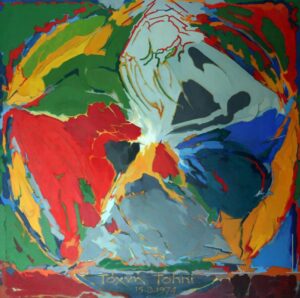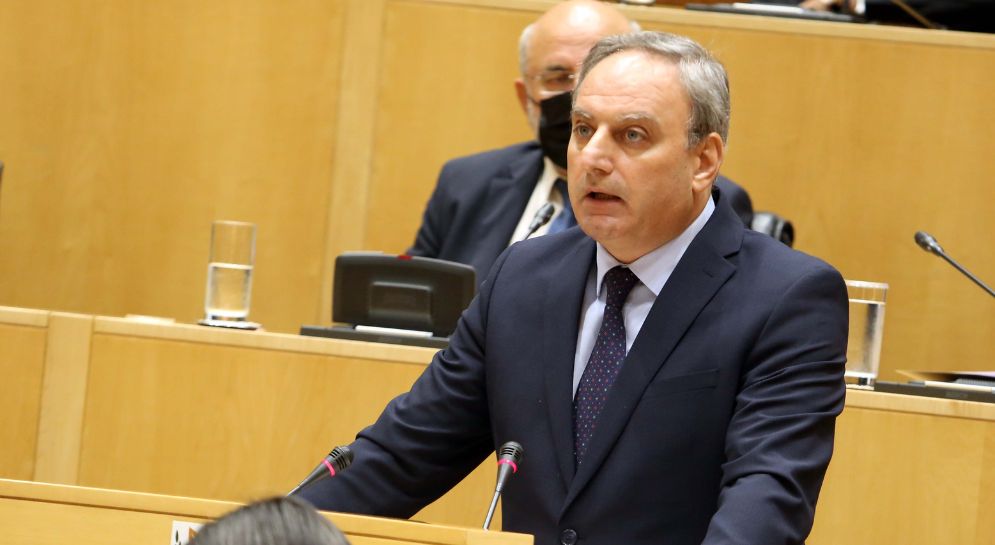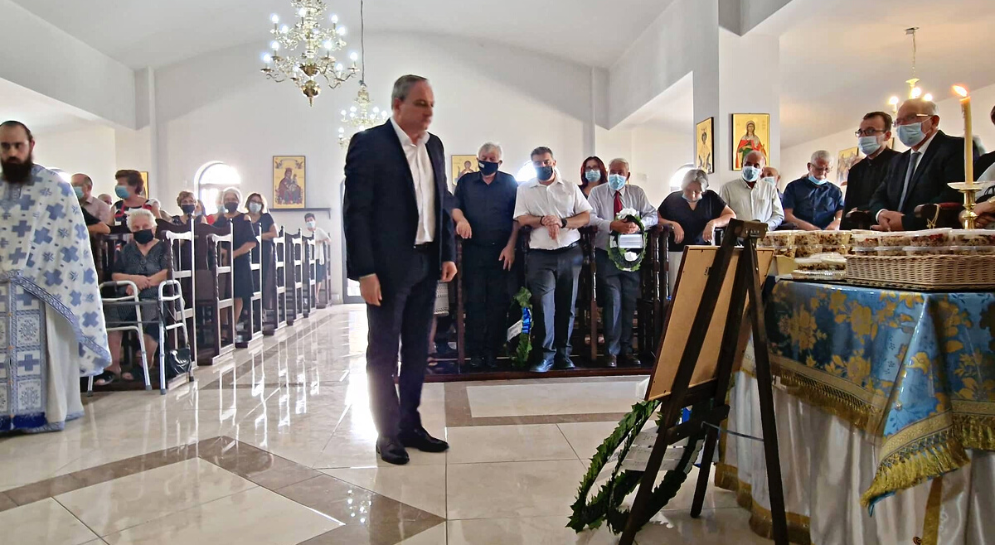
“Massacres of Turkish Cypriots committed by Greek Cypriot fascism – the unknown dark page of History” by Georgos Koukoumas, member of the C.C. of AKEL
02/08/2015
One of the most unknown to many Greek Cypriots pages of Cyprus’ contemporary history is the massacres of Turkish Cypriots committed by Greek Cypriot fascists, both during the period of intercommunal clashes from 1963 to 1964 and during the summer of 1974. The cases of the slaughter of 126 Turkish Cypriots – the majority women and elderly people – from the three small Turkish Cypriot villages in the Famagusta district (Maratha, Santalari and Aloa), as well as the execution of 84 civilian Turkish Cypriot prisoners from the village of Tochni in August 1974, by members of EOKA B and Greek officers represent one of the most shameful sins committed in the history of our country.
Maratha, Aloa, Santalari…
Immediately after the Turkish invasion of 20th July 1974, a group of Greek Cypriots entered the three Turkish Cypriot villages, firing in the air and spreading fear. They stormed houses and rounded up the people whom they transferred by bus to the school of Peristeronopigi village.
The men were later transferred to a prison camp in Famagusta and subsequently taken to Limassol. All the women, children and old people were executed in August 1974 and buried in mass graves: 89 people in Maratha and 37 people in Aloa. According to the testimony of Turkish Cypriot Asiir Ahmet from Maratha when Turkish troops occupied the region on 20th August 1974, the United Nations discovered the corpses in the village’s waste site: “When the digging began (…) we saw dozens of beheaded and mutilated bodies, mostly children that were covered only with garbage. Some of the victims were tied together with wire. In one case alone we measured ten people tied with wire. Some of the victims were half-burned. Almost all the males of all ages were without heads. Among the children who were found murdered in the waste site were my six brothers, my mother, grandmother and my aunt with her seven children.”
According to the testimony of Nikos Genias a Greek Cypriot soldier published in AKEL’s daily newspaper “HARAVGI” on 20th July 1998, who during the retreat from the Pentadaktylos mountain range passed from three martyred Turkish Cypriot villages, “members of EOKA B with excavators opened holes in the ground and buried the elderly and children they had killed in these villages. In fact, one of them, boasting, told us “We completed our job” …”.
Cold-blooded execution of the Turkish Cypriots of Tochni village
On 14th August 1974 Greek Cypriots together with Greek soldiers arrested more than 80 Turkish Cypriot men from the village of Tochni (including a 12 year old boy) and having kept them for a night in the Greek school, transported them in two buses to Limassol. According to the sole survivor of Tochni, the 19 year old then Suat Hussein, the Turkish Cypriots on one bus were driven to a location near to the village of Palodia where they were executed with bursts of automatic weapons, whilst the Greek Cypriots fascists subsequently shot in the head anyone who was still alive. That night, Suat saw with his own eyes all his beloved ones fall dead beside him in the dirt.
He was also among them and pretended he was dead. “Those who were standing fell down. It was preceded by yelling and screaming. One of the executed fell on me”, he recalls, saying that he realized he was still alive when the shooting stopped. “I had some injuries to the chest and hands, and a bullet grazed my head. (…) As soon as I found an opportunity I got up and ran. I didn’t even have time to cry. “
When a few months later, the United Nations Peacekeeping Force in Cyprus (UNFICYP) sought to investigate the case, the murderers dug up the victims and buried them in the village of Gerasa. The passengers of the second bus were executed and buried in the village of Pareklishia. Up to the present moment, the Investigative Commission on Missing Persons has found and identified the remains of 46 victims of Tochni. Others are in the process being identified, whilst some are still being sought…
The revelation of the massacres had caused back then shock, both in Cyprus and abroad, while it also fuelled the murderous fury of the advancing Turkish army against the Greek Cypriots who were being uprooted as refugees from their villages. Many Greek Cypriots that had been captured by the Turkish army give an account of the brutal torture they suffered from the Turks as “retaliation” for these massacres. In other words, the Greek Junta and EOKA B having given with the execution of the coup d’état the pretext Turkey was yearning for in order to invade the island, instead of fighting the Turkish army, chose to kill prisoners, women and children in the rear behind the front line of battle. At the same time ordinary Greek Cypriots – soldiers and ordinary citizens – were paying the cost of the treachery committed by the junta of Greece and EOKA B.
Cover-up, distortion and exploitation
The young generation of Greek Cypriots know little about the crimes committed by the Greek Cypriot extreme right against Turkish Cypriots. The instances where these cases have been presented in the Greek Cypriot mass media were rare notable exceptions.
The Greek Cypriot nationalists refuse to talk about the crimes against the Turkish Cypriots on the pretext that “in doing so we exonerate Turkey for the invasion.” The truth is that they refuse to talk about these crimes because in doing so all their myths about the “untarnished Greek people” are refuted.
In addition, some of the unrepentant criminals are circulating among us and belong to the political camp of the Right and extreme right.
Furthermore, distortion also exists from the cosmopolitan liberal perception and outlook about the Cyprus problem, which passes over the fact that the nationalist hatred between the two communities did not appear out of nowhere, but was generated and cultivated by imperialism; that all these actions were part of the NATO plan to partition the island. This perception is complemented by the view that just the psychological reconciliation of the two communities alone is sufficient for the solution of the Cyprus problem, without pointing out the liberation of Cyprus from the armies and criminal foreign guardians as necessary preconditions.
The most outrageous exploitation of these crimes is made by the Turkish chauvinist circles aiming to distract from the Turkish occupation their own terrible crimes against the Greek Cypriots, but also from the oppression suffered by the Turkish Cypriot community from Ankara. The real objective of Turkish propaganda is to persuade that the Greek Cypriots are a danger to the Turkish Cypriots and therefore the Turkish army must remain on the island in order to guarantee their safety. All of this supposedly proves that the two communities cannot live together and for that reason Cyprus should be partitioned into two independent states.
The truth redeems and shows the way forward
Only the Left and some other consistent supporters of the reunification of Cyprus and its people insisted over the years – paying the price of being slandered and insulted as “anti-Greek” and “traitors” – on reminding the inconvenient truth that crimes were committed by forces in both communities and in particular the Greek Cypriot and Turkish Cypriot fascist extreme right. The former President of the Republic Demetris Christofias was the first leader of the Greek Cypriot community to proceed to the historic move to recognise the crimes committed by Greek Cypriots against Turkish Cypriots. AKEL recalls these crimes and stresses that “if you do not tell the truth, the whole truth and nothing but the truth then the trust between the two communities will not be built again.”
And the truth is that, together with the 1,493 cases of Greek Cypriot missing persons, there are before the Investigatory Committee on Missing Persons also 502 cases of Turkish Cypriot missing persons. For how long will certain political forces in the Greek Cypriot community avoid questions like how is it that numerous Turkish Cypriot children were found in wells, the remains of which are being discovered today?
The recognition of these crimes neither justifies, nor indeed wipes out the continuing pain of the Turkish occupation, nor the crimes committed by Turkish Cypriot chauvinism against the Greek Cypriots. On the contrary, it complements the historical picture of the imperialist crime that was committed against the whole of the people of Cyprus. At the same time, it lights up the path of historical truth that leads to the mutual understanding between the two communities. It prepares the conditions for a genuine reconciliation between the two communities which must be expressed primarily through the waging of a common struggle against the occupation and partitionist status quo.





